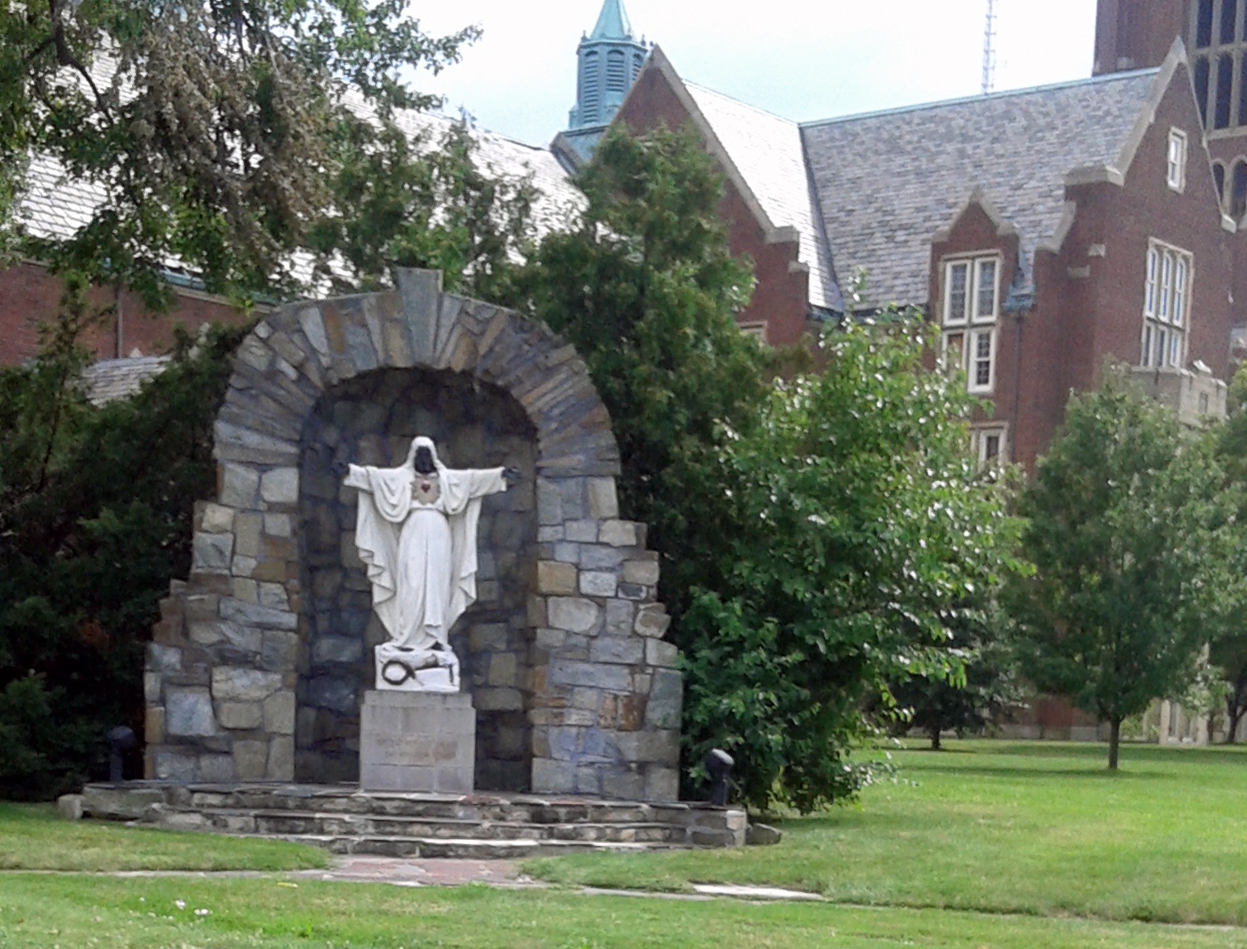‘Black Jesus’: Sacred Heart Seminary's Symbol of Racial Reconciliation
The statue has become an internationally known icon representing Christ's love of all peoples, and is regarded with pride by the seminary's black and white neighbors.

On Detroit's west side, at the corner of Chicago Boulevard and Linwood Avenue, stands “Black Jesus.” The life-sized statue of Christ was erected on the campus of Sacred Heart Major Seminary in 1957, to commemorate Pope Pius XII's encyclical Haurietis Aquas, “On Devotion to the Sacred Heart.”
Ten years later, in July 1967, the city was forever changed when racial unrest set Detroit ablaze. White police officers' raid of a black-owned illegal business sparked four days of widespread violence and rioting. In the days following the riots, the statue received a new paint job. Jesus' white concrete face and hands were painted black – a sign of racial reconciliation that remains to the present day.
Remembering the Riots – 50 Years Later
In the early morning hours of July 23, 1967, Detroit police officers raided a “blind pig” – an unlicensed after-hours drinking and gambling pub hidden above a print shop on 12th Street at Clairmount, on the city's near-west side. Inside, the police found and arrested 82 people who had been celebrating the homecoming of two GI's who had just returned from service in Vietnam.
The arresting officers were white; the partygoers were black.
As Detroit police officers waited for vans to transport the detainees, a crowd of onlookers gathered. People from the neighborhood began throwing bottles and rocks at the arresting officers and at their vehicles; then, the angry mob tossed a few rocks through store windows and began dragging merchandise into the street. Someone started a fire in a grocery store at 12th Street, and the militant crowd would not let firefighters put the fire out. Other fires started in other neighborhoods; and for five days, Detroit's skyline was smeared by smoke and flame.
Over the next five days, mobs would set 431 intentional fires throughout the city. A city-wide curfew was imposed; sales of alcohol and firearms were suspended; and businesses were shuttered. Looting was widespread. In the end, there were 43 dead and nearly 1,200 injured. Police arrested over 7,200 people, and more than 2,000 buildings were destroyed. Driving with my father through the streets after it ended, I was faced with the smoke of burned buildings and ruined lives, stunned to see National Guardsmen, rifles trained, still guarding the rooftops.
The 1967 riots in Detroit were a permanent stain on my city's history. Fifty years later, many of the sites remain vacant – weedy lots where once stood mom-and-pop shops, neighborhood grocers, offices, churches, and homes.
There were local heroes: Local celebrities including the Detroit Tigers' popular left fielder and designated hitter Willie Horton, who had grown up near the epicenter of the race riot, and popular Motown singer Martha Reeves rode down 12th Street trying in vain to calm the crowd. Nothing worked.
Sacred Heart Seminary's Message
And two blocks from the site of the first fire, on the campus of Sacred Heart Major Seminary, in a gesture of understanding and outreach, someone – was it students, or protesters? – used black paint to cover the face, hands and feet of the seminary's statue of the Sacred Heart.
The reactions to the black-faced statue were mixed. Some were outraged by what they considered vandalism. Others pointed to the Negroid Jesus as exemplifying ethnic pride, social and religious justice. Monsignor Francis Canfield, who served as seminary rector at the time of the riot, wrote in the Michigan Catholic on September 14, 1967 that the original white had been restored, although he gave no indication as to who repainted it. He wrote, simply, “Statue painted by three white men.”
But when community activists complained, accusing the seminary of racism, Msgr. Canfield ordered the Christ figure to be returned to black. “The decision was reached,” he posted three days later on September 17, “to repaint it black, in order to retain the symbol.” Christ, he noted, is for all people, black and white.
In September 2007, an article by Daniel Gallio in the seminary's quarterly magazine Mosaic quoted one former seminary administrator:
I would suggest that the city of Detroit really has no positive symbol like it. The Sacred Heart statue is no longer just a symbol of the seminary. It is now an icon of universal appeal.
Today it is an internationally known icon representing Christ's love of all peoples, and is regarded with pride by the seminary's black and white neighbors. Sacred Heart Seminary has pledged to keep the features of the Sacred Heart black for all time.














